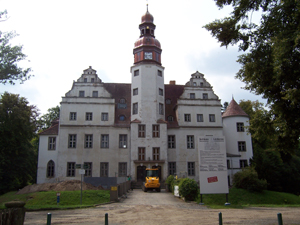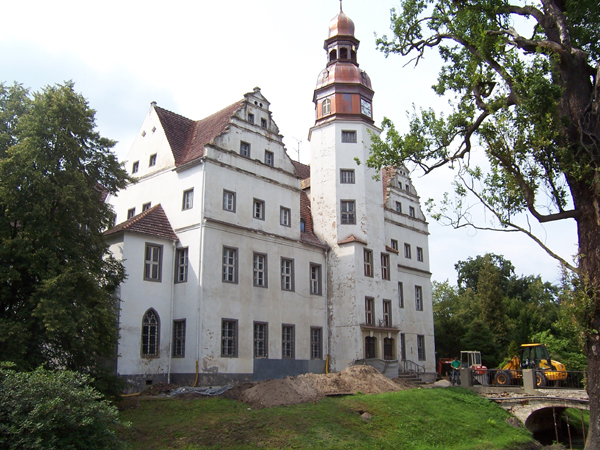The Palace Lindenau
The landscape park at the border to Lindenau, where the palace is situated, is listed. By incorporation of the original garden and park its present form was created around 1820 to 1850 (ca 23 hectare). Subsidiary branches of the Pulsnitz run through the park. It unites elements of an English landscape park with the characteristics of baroque and Dutch horticultural art. Between the park, which is situated in the Auenwald (called Urwald in the vernacular) and the Kalmus pond lays the Lindenauer watermill. It was also built around 1600.

The existing nature and the historical buildings offer themselves for the quiet tourism. The palace originated in 1584, but has since been then several times rebuilt and extended. Elements of the renaissance and baroque are mirrored in the architectural style. In 1668 the building of the present protestant church started. The gate-house was erected in 1690. Park, palace, gate-house, church and the half-timbered house form, for the Lausitz unique village ensemble of remarkable beauty.
A careful estimation puts the village founding time of around and after 1200. At this time the area between Schwarzer Elster and Pulsnitz was being drained and the village Lindenau founded. In 1346 Lindenau is being mentioned in a document for the first time as independent parish. In 1392 Lindenau belonged to the gau Milzemie. It is very probable that estate and village were founded in the early Middle Ages by the knights from Lindenau who belonged to the nobility of the former Mark Meißen. The formation of the village, which points to a Germanic settlement, supports this assumption. As coat of arms and seal a tree (Linde/lime tree) was used.


